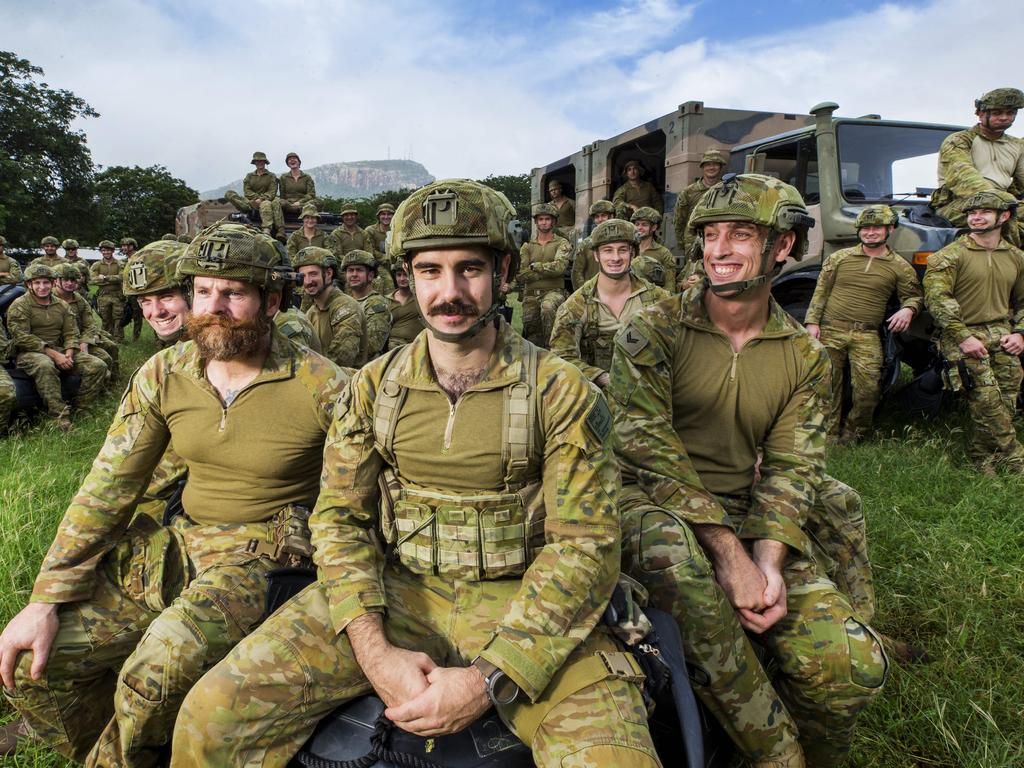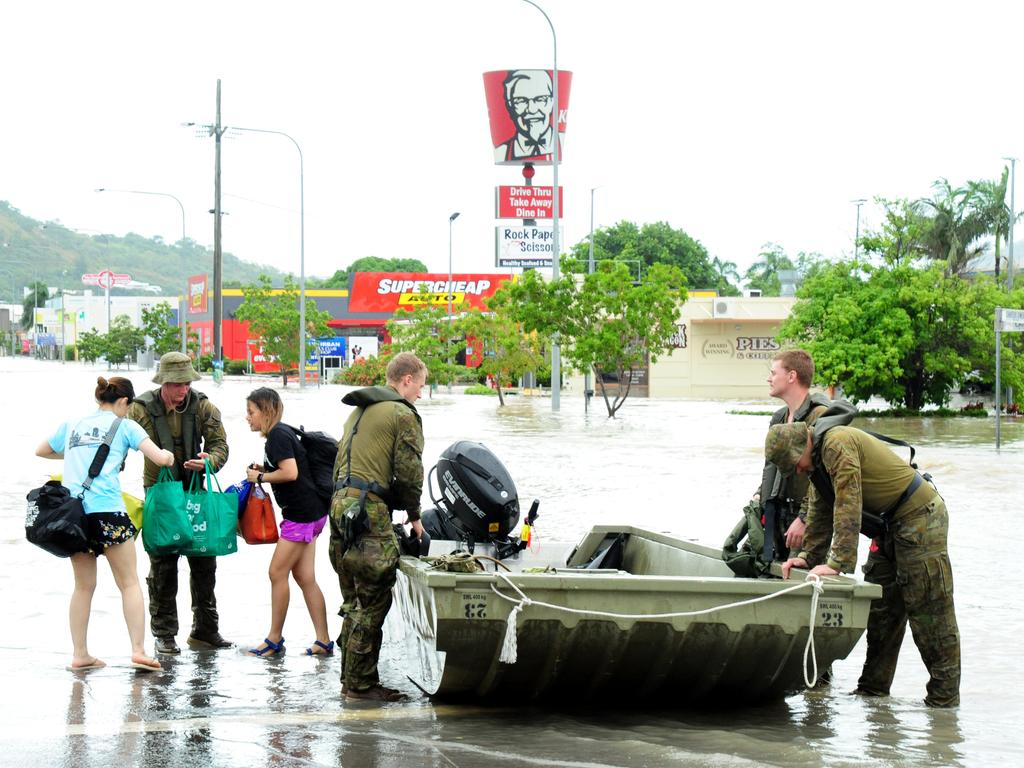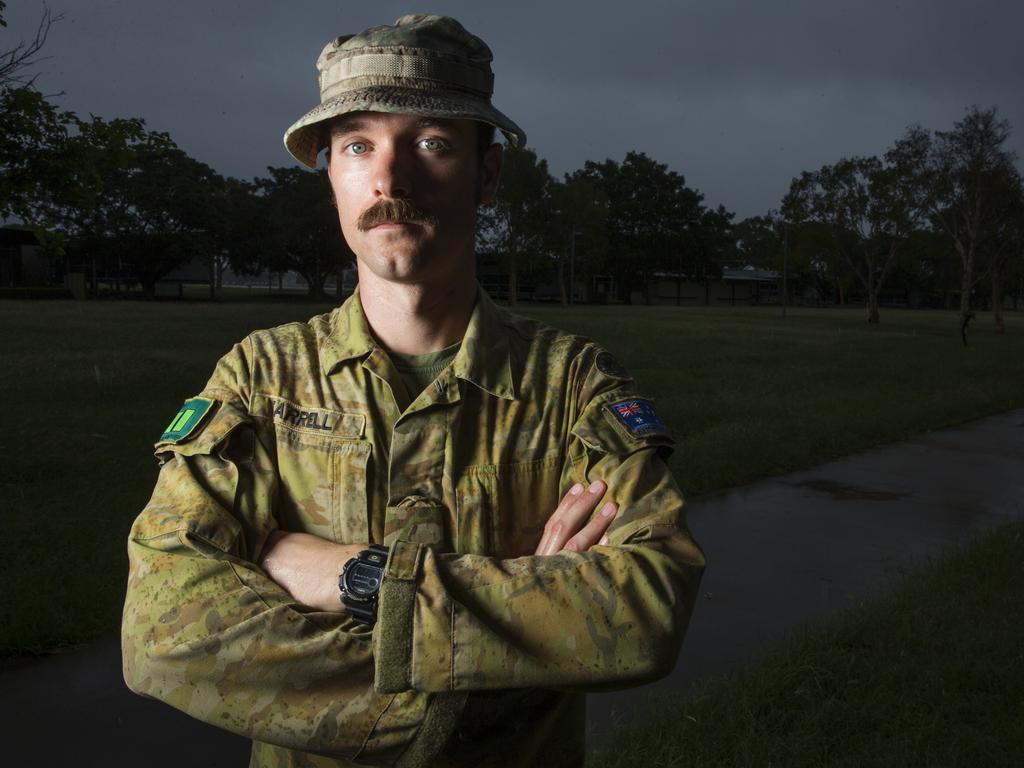Army rescue heroes compare shock in north to war zones
Hundreds of Townsville residents could have lost their lives if not for the rapid mobilisation of the army’s 2RAR (Amphib).
QLD weather news
Don't miss out on the headlines from QLD weather news. Followed categories will be added to My News.
THEY are the heroes who saved Townsville.
Hundreds of people could have lost their lives if not for the rapid mobilisation of the army’s 2RAR (Amphib).
Search and rescue operation after two fall from boat
Rural firey volunteer travels 400km to help Townsville as part of Strike Team effort
Dozens of babies born during weather event
The true extent of the huge rescue mission that lasted from Sunday night through to the early hours of Monday can today be revealed by The Courier-Mail.
More than 400 people were rescued from their flooded homes in Idalia, including a six-month-old who had to be sheltered from the torrential rain from inside its mother’s raincoat.
Some of the 92 army personnel who took part in the rescue compared the “tense” disaster to their deployments in war-torn countries such as Iraq.
Lieutenant-Colonel Judd Finger, who was commanding officer on the ground, said he was genuinely concerned that if the army did not get into the area there would have been deaths.
“We took the risk and we deployed the small boats platoon,” he said.
“I’ve been in conflict zones (Iraq, East Timor) and I’ve seen similar people in a state of shock.”

About 6.30pm on Sunday, the army took 15 black zodiacs to Lakeside Drive near the highway, where they began inflating the vessels.
When they arrived the ground was dry, but in the 40 minutes it took to inflate the boats the water was up to their knees.
The SES, police and the army’s joint taskforce were also involved in the rescue, as emergency services spread out over the suburb.
Floodwaters rose to 2m in some areas.
“Floodwaters were rising quickly, a lot of the roads were getting cut off,” Lt-Col Finger said.
“It was overcast, pitch-black – it was probably the worst conditions we could have.”
Of the evacuees, about one-third were children, including many youngsters aged between three and four.
“Every man had to have identifying markers because we could easily lose a person 5m to 10m in front of you,” Lt-Col Finger said.
“The biggest problems were currents. Small boats were hitting currents, going sideways, moving into houses.

“While it may look quite temperate on the surface, (it was) really dangerous underneath.”
While six evacuees was the optimal number to fit into the zodiacs, up to 10 were being squeezed in.
Hundreds of dogs and cats were rescued, while a guinea pig and bird also made it on board.
Police diver Michael Turner said two police teams were stationed in Idalia.
“It was hard to really gauge their (evacuees) shock – it was just get in the boat as quickly as you can,” he said.
“There was huge amounts of children, that was the biggest thing.
“They (parents) didn’t have time to prepare, they couldn’t put their kids in jumpers and raincoats.”
Mr Turner was in the zodiac when a mother and her six-month-old child were rescued.
“The baby was tucked in her shirt and raincoat and was crying most of the way,” he said.
When asked how many lives were saved that night, Mr Turner said it was “in the hundreds”.

Major Tim Farrell said that when the army arrived, it became clear the situation was bigger than they had anticipated.
“When we arrived there was SES there, police, fireys, civilians in their small boats,” he said.
“We were all trying to do the same thing, it became clear that the dispatch system was maybe overloaded.
“There was too much work for not enough organisations.”
Major Farrell said at one stage, he received 20 to 30 separate evacuation requests.
“There was a guy that was doing runs through the floodwater in his own dump truck, pulling people out and eventually the water got too deep,” he said.
“They were in the tray.”
Lieutenant Harrison Potamianakis said the biggest challenge was the amount of different houses that needed to be visited, and coming up with a scheme of manoeuvre.

“Some vehicles were being used as a point for people to congregate (larger trucks),” he said.
When asked whether the personnel considered themselves heroes, Lt Potamianakis said “absolutely not. It’s business as usual for us.”
Platoon Sergeant Andrew Rimmer said one man took 25 minutes to persuade to get out of his home.
“A husband and wife in their 50s, having an argument because the wife wanted to leave but the husband didn’t want to go,” he said.
“I told the husband that I was stubborn like him but in this scenario I would leave, because why should I give you two ration packs when that’s only going to last you two days?
“He came around and said ‘I agree with you.’
“That particular house was waist deep in water.”



